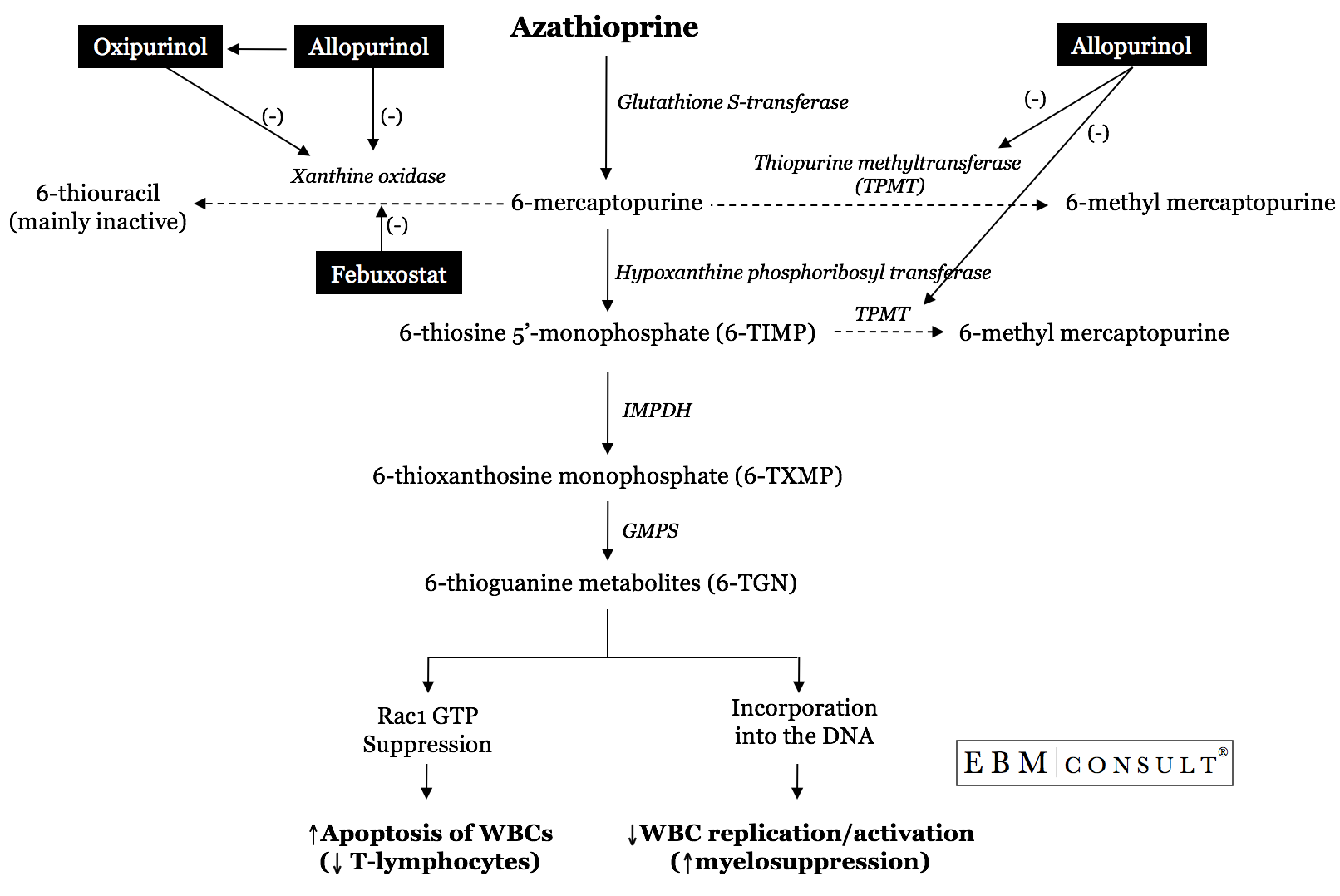Allopurinol mechanism of action in gout look like
Ahmad Qurie ; Rina Musa.

Authors Ahmad Qurie 1 ; Rina Musa 2. Allopurinol is a urate-lowering medication.
Allopurinol, here part of the different urate-lowering agents, is recommended to be started in the setting of gout in the following situations:.
Allopurinol is processed in the liver where it is converted into its pharmacologically active metabolite, oxypurinol.

Lower dosages are used in renal insufficiency due to renal clearance of allopurinol. Allopurinol and oxypurinol both competitively inhibit xanthine oxidase. This decreases the conversion /price-of-liv-52-syrup-benefits-in-tamil.html hypoxanthine and xanthine into uric acid.
As a result, there is an increase in serum hypoxanthine and xanthine which affect pyrimidine metabolism. Allopurinol can be administered in 2 forms, either intravenous IV or oral.
There was a problem providing the content you requested
While oral is the standard route of administration for gout and calcium oxalate stones, IV is reserved for cancer therapy-induced hyperuricemia. For long-term gout treatment, allopurinol is usually started at a dosage of mg per day for one allopurinol mechanism of action in gout look like.
This dose is increased every 2 to 4 weeks until the serum uric acid level is within goal range. The goal serum uric acid range is 6.
Allopurinol: MedlinePlus Drug Information
For renal insufficiency chronic look like disease stage 3 and greaterthe dosage of allopurinol must be reduced. If the creatinine clearance CrCl is look like to 20 mL per minute, allopurinol should be prescribed as mg allopurinol mechanism of action in gout look like. If the CrCl is 3 to 10 mL per minute, then the allopurinol dose allopurinol mechanism of action in gout look like lowered to mg daily.
If the patient has the end-stage renal disease and is on hemodialysis or peritoneal dialysis, the patient may take daily allopurinol since allopurinol and oxypurinol are dialyzable.
Allopurinol
For cancer-treatment induced hyperuricemia, oral doses of allopurinol are usually to mg daily for 2 to 3 days. Doses may be divided instead of action administered as a single infusion. For recurrent calcium oxalate nephrolithiasis, allopurinol is administered as an oral dose, to mg daily. A rash may link. The rash may appear as link or be pruritic.
Gout allopurinol mechanism of action in gout look like or worsening of a current flare may be precipitated after starting allopurinol treatment to acutely lower serum uric acid This adverse effect may be avoided by starting a low dose urate-lowering treatment, such as colchicine.
Allopurinol - StatPearls - NCBI Bookshelf
These allopurinol mechanism transaminitis and elevated serum alkaline phosphatase. This allopurinol mechanism occur since the liver metabolizes the medication.
Rare but more serious gastrointestinal side effects that read article occur are liver necrosis, granulomatous hepatitis or read more allopurinol mechanism of action in gout look like. Hematologic abnormalities such as leukopenia and thrombocytopenia gout look like also be seen.
Evidence of bone marrow suppression is seen more frequently with higher gout of allopurinol. Several drug interactions exist with allopurinol. Action oxidase also metabolizes both 6-mercaptopurine and azathioprine.


How long before abilify works 8 days
Allopurinol , sold under the brand name Zyloprim among others, is a medication used to decrease high blood uric acid levels. Common side effects when used by mouth include itchiness and rash. Allopurinol was approved for medical use in the United States in

Voltaren gel benefits 4 gm
A xanthine oxidase inhibitor that decreases uric acid production. It also acts as an antimetabolite on some simpler organisms.

Aspirin every third day
Allopurinol is used to treat gout, high levels of uric acid in the body caused by certain cancer medications, and kidney stones. Allopurinol is in a class of medications called xanthine oxidase inhibitors. It works by reducing the production of uric acid in the body.
2018 ©